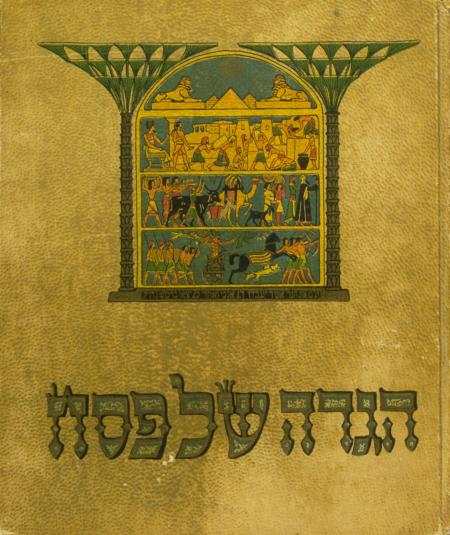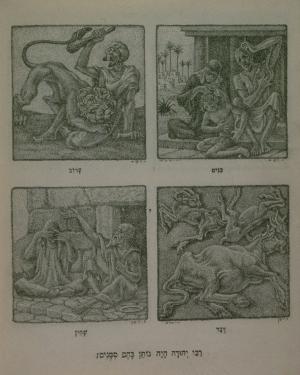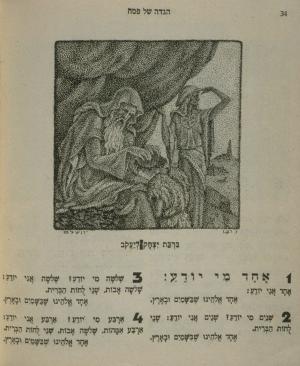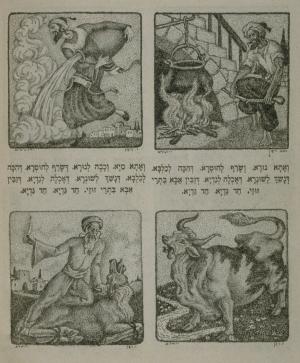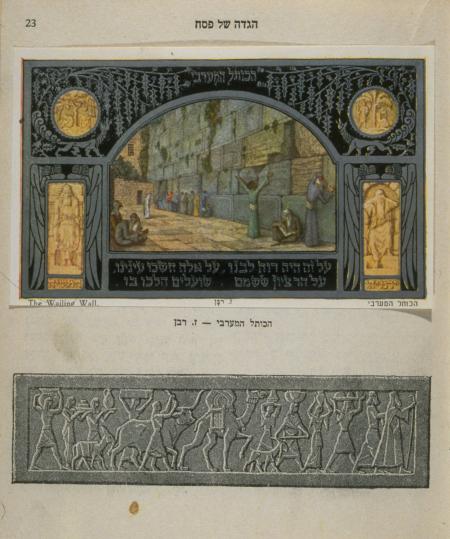Obj. ID: 1101
Jewish printed books Ze'ev Raban, The Passover Haggadah, Tel Aviv, 1955
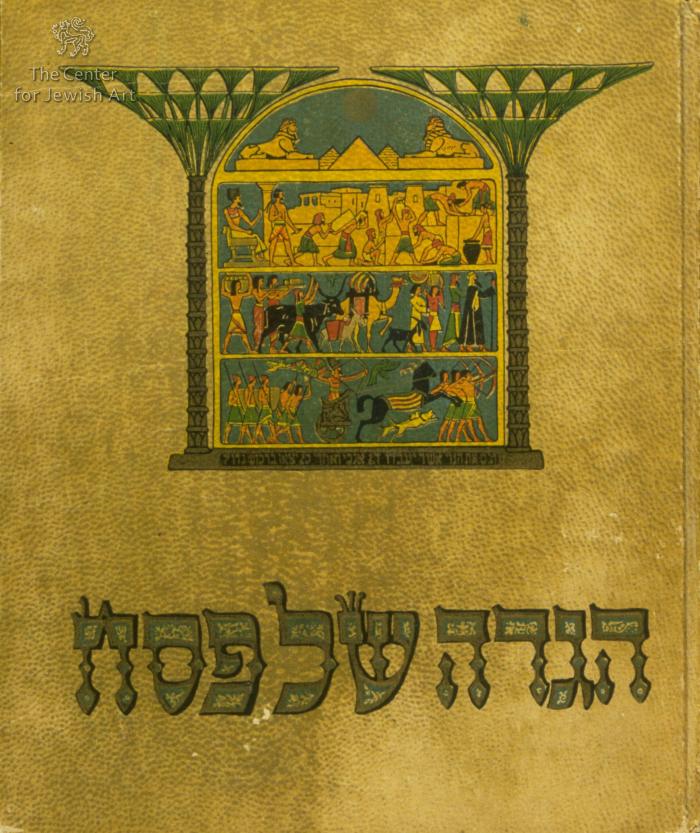
The book cover has a Parchment-form background. It is decorated with half page panel. The panel includes two lotus brown columns, with turquoise arches, framing four registers. The upper, arched register depicts two yellow sphinxes facing each other with three yellow pyramids of the ancient dynasty in between them, with a blue background. The three other registers are painted in an Egyptian style. The second register represents the Israelites in bondage in Egypt (oc. 1053.1.1).The third one represents Exodus (oc. 1053.1.2) and the bottom picture (oc. 1053.1.3) represents the Egyptians pursuing the Israelites. The text, GN., 15:14, is written at the bottom of the panel in block, golden Hebrew letters on a black background. The title is written on the lower half of the page, in bold block Hebrew letters : "הגדה של פסח" "Haggadah of Passover" The letters are painted in decorated turquoise contoured by a black line.
Summary and Remarks
Remarks
sub-set tree:
Name/Title
Ze'ev Raban, The Passover Haggadah | Unknown
Object Detail
Monument Setting
Unknown
Date
1955
Synagogue active dates
Reconstruction dates
Artist/ Maker
Origin
Historical Origin
Unknown
Community type
Unknown |
Congregation
Unknown
Location
Unknown |
Site
Unknown
School/Style
Unknown|
Period
Period Detail
Documentation / Research project
Unknown
Iconographical Subject
Unknown |
Textual Content
Unknown |
Languages of inscription
Unknown
Shape / Form
Unknown
Material / Technique
Material Stucture
Material Decoration
Material Bonding
Material Inscription
Material Additions
Material Cloth
Material Lining
Tesserae Arrangement
Density
Colors
Construction material
Measurements
Height
Length
Width
Depth
Circumference
Thickness
Diameter
Weight
Axis
Panel Measurements
Condition
Extant
Documented by CJA
Surveyed by CJA
Present Usage
Present Usage Details
Condition of Building Fabric
Architectural Significance type
Historical significance: Event/Period
Historical significance: Collective Memory/Folklore
Historical significance: Person
Architectural Significance: Style
Architectural Significance: Artistic Decoration
Urban significance
Significance Rating
0
Ornamentation
Custom
Contents
Codicology
Scribes
Script
Number of Lines
Ruling
Pricking
Quires
Catchwords
Hebrew Numeration
Blank Leaves
Direction/Location
Façade (main)
Endivances
Location of Torah Ark
Location of Apse
Location of Niche
Location of Reader's Desk
Location of Platform
Temp: Architecture Axis
Arrangement of Seats
Location of Women's Section
Direction Prayer
Direction Toward Jerusalem
Coin
Coin Series
Coin Ruler
Coin Year
Denomination
Signature
Colophon
Scribal Notes
Watermark
Hallmark
Group
Group
Group
Group
Group
Trade Mark
Binding
Decoration Program
Suggested Reconsdivuction
History/Provenance
Main Surveys & Excavations
Sources
Type
Documenter
|
Author of description
|
Architectural Drawings
|
Computer Reconstruction
|
Section Head
|
Language Editor
|
Donor
|
Object Copyright
Sc_564
Negative/Photo. No.
The following information on this monument will be completed:
Unknown |


